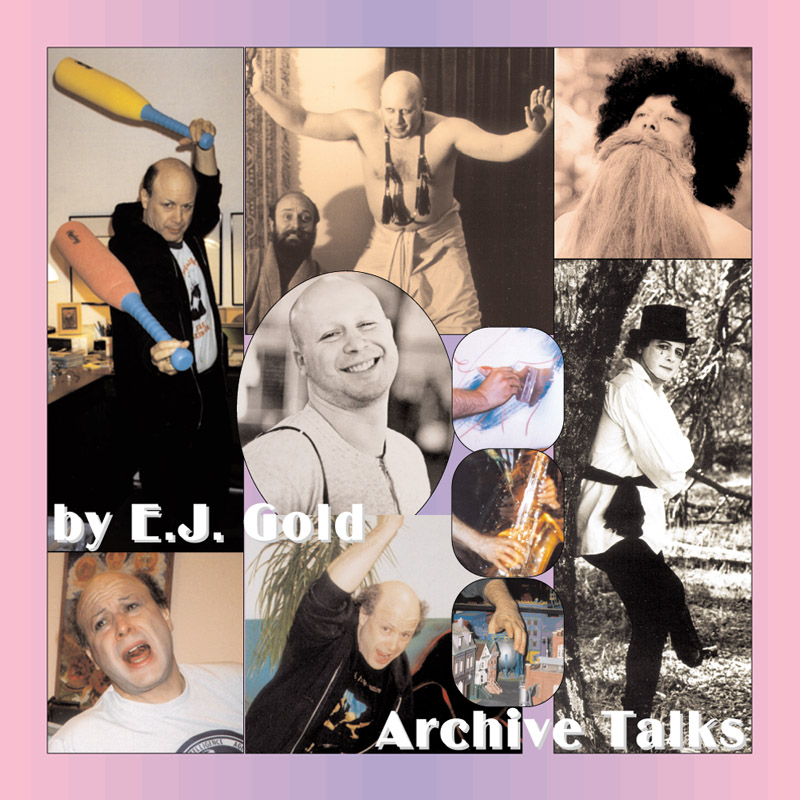

CDT356
Working in the Waking State #2
Synopsis
The talk revolves around themes of perception, reality, and mindfulness, with a strong focus on the "waking state"—a concept that suggests true awareness beyond the illusions of daily life. Using humor, anecdotes, and philosophical reflections, the speaker explores various ways to engage with reality, from farming analogies to spiritual exercises. The session is highly interactive, blending storytelling, improvised humor, and physical exercises designed to challenge habitual thinking.
Summary
The speaker opens with a humorous farming story, introducing the metaphor of the "lead cow" to illustrate how people follow familiar patterns blindly. From this, the talk meanders through various digressions, including a discussion of Roman oath-taking practices, the history of citizenship in ancient Rome, and perceptions of biblical texts. These serve to underscore humanity's tendency to operate within inherited narratives rather than achieving true awareness.
The core of the talk explores the idea of the "waking state"—a condition of heightened, unfiltered awareness often blocked by habitual distractions and illusions. Using humor, absurd anecdotes, and physical demonstrations, the speaker encourages the audience to recognize fleeting moments of this state. They demonstrate exercises designed to cultivate attentiveness, such as rhythm-based movement to musical loops and spontaneous comedic improvisations.
Another key theme is the importance of cycles—the loops of experience that define our perception of time and reality. The talk highlights the plasticity of experience, emphasizing how repetition combined with conscious observation can lead to greater self-awareness. References to theater, jazz improvisation, and game design reinforce the idea that life itself is a form of a structured but dynamic game.
There is an emphasis on play as a method of learning—whether through dance, storytelling, or computer game development. The speaker describes a training process in "blue-lining," a metaphor for both digital game design and the construction of a perceptual framework that allows one to navigate the waking state more effectively. They advocate for an iterative learning process, built upon direct experience rather than abstract theory.
In the final portion, the speaker introduces tangible exercises—finding hidden objects, clearing spaces, and engaging in collaborative tasks—all designed to blur the lines between structured activity and open awareness. The session ends with reflections on the importance of mindfulness in daily life, reinforcing the message that the waking state can be achieved at any moment when one is present to reality as it is.
Keywords & Key Phrases
- Waking state
- Maya illusion
- Shamanic voyaging
- Applied attention
- Loop cycles
- Blue-lining
- Bardo safaris
- Perceptual frameworks
- Opportunistic pathways
- Custodial consciousness
- Ergodic awareness
- Tangible synaptic leaps
- Guild dynamics
- Layered realities
- Threshold perception
- Temporal subjectivity
- Karmic inertia
- Elastic cognition
- Feminizing the experience
Graphic Prompt
"An enigmatic surreal scene blending rustic farm elements with metaphysical symbology: an illuminated cow, wearing a cosmic bell, leads a procession of ethereal figures through a shifting landscape of mist and geometric patterns. In the distance, a massive ancient book opens to reveal cascading waterfalls of light, hinting at layered realities. The sky is a swirling mixture of celestial maps and laughter, suggesting the fragile dance between waking and dreaming. The entire composition exudes a painterly, dreamlike quality, reminiscent of Salvador Dalí and Moebius, capturing both humor and philosophy in a single image."



